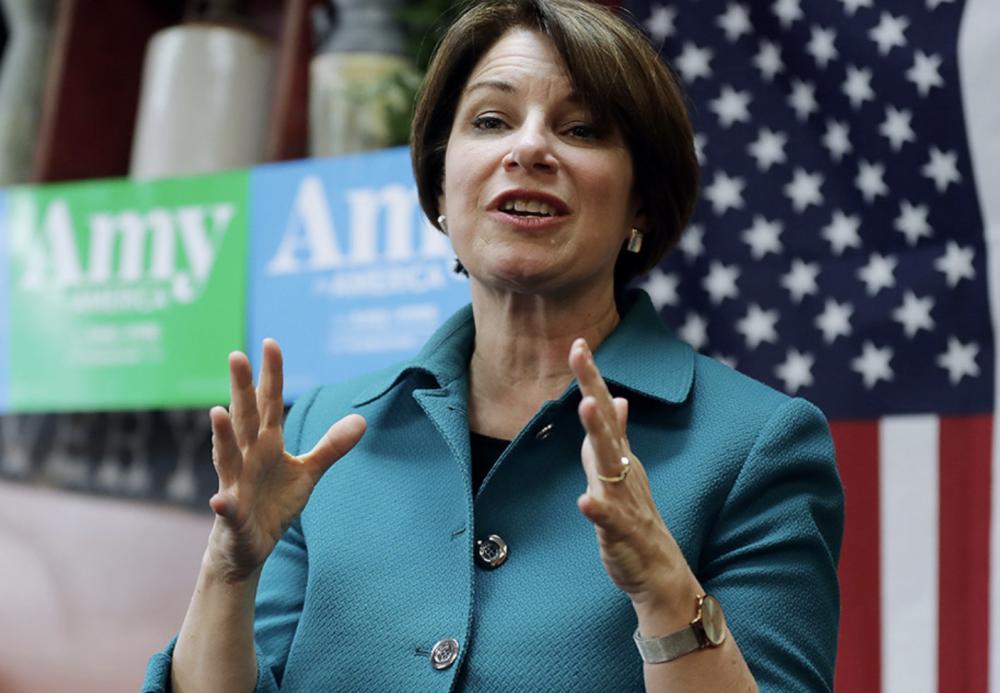National interest in the Presidential candidacy of Amy Klobuchar is, to be charitable, “muted.” Like a Minnesota winter, her candidacy appears frozen–roughly 2 percent per cent in recent polls. While there may be reasons early Democratic activists prefer other candidates, she deserves better. For Marylanders, she deserves a lot better for several reasons, including her ability to work with Republicans. But the biggest reason to support her is her strong, credible, and effective plan to address opioid abuse and mental illness.
Maryland needs help in addressing the opioid crisis as well as the mental health issues that contribute to it. According to the National Institute on Drug Abuse, the state ranks fourth in opioid deaths. In 2018, from January through September, 1,848 Marylanders died from “unintentional intoxication,” 1,648 of them from opioids. Add to this 630 deaths by suicide, three times as many as occur from alcohol-related traffic deaths. Then there is lost economic productivity. A 2014 study reports that drug abuse, including alcohol, cost the eastern shore $451 million that year, well before the record-high numbers for opioid abuse of 2019. Talbot County alone lost over $38 million in productivity. Clearly, there is a crisis.
To date, Maryland has failed to reverse the trend of sharp yearly increases in reported opioid deaths. And 2019’s numbers are likely to eclipse 2018’s. Governor Hogan declared an emergency in March 2017, but the state is spending only $171 million in the current fiscal year, according to the Baltimore Sun. This funding, and a focus on increasing the availability of the overdose-reversing drug Narcan, is described by experts as “a drop in the bucket” and inadequate. It’s hard to disagree.
Presidential candidate Klobuchar may have an answer. She has boldly proposed a fee of 2 percent per milligram of the active ingredient in opioids sold, which would be paid for by the manufacturers (there would be exceptions for things such as opioids used to abate pain suffered by cancer patients), to fund a $100 billion, multi-faceted initiative. The plan includes increasing early intervention efforts on both drug abuse and mental health, suicide prevention, and reversing the current focus on punishing rather than treating drug abusers. The plan also includes increased research and increased patient access to treatment by increasing the number of beds available—currently 80 percent of those needing treatment are unable to get it.
The Klobuchar plan, which has yet to be fully fleshed out, contains the key elements of a successful answer to the current crisis: Education initiatives, early detection and intervention; greatly increased availability of treatment; Increased research; rethinking the characterization of drug abuse as primarily a law enforcement issue; and ensuring greatly increased and reliable funding without unreasonably stressing federal or state budgets.
Klobuchar, of course, is not the only Democratic candidate who has put forth an initiative that eclipses the current federal initiative. In my view, however, she is ahead of her competitors. She has put forth a plan that would save hundreds of Maryland lives each year and thousands nationally. She also has a record in the U.S. Senate, where she has sponsored important, bipartisan legislation to strengthen health care. Marylanders, especially those of us in Talbot County who are concerned about the opioid and mental health crisis, will be well-served to examine Klobuchar’s proposals and encourage more focus on this vital issue in coming elections.
J.E. Dean of Oxford, writes on policy and politics based on more than 30 years working with non-profits and others interested in domestic policy. He is an advocate for the environment, civil public debate, and good government.
Notes: In 2017, there were 1,985 overdose deaths involving opioids in Maryland—a rate of 32.2 deaths per 100,000 persons, which is twofold greater than the national rate of 14.6 deaths per 100,000 persons. The state ranks in the top 5 for opioid-related overdose death rates with the largest increase attributed to cases involving synthetic opioids (mainly fentanyl).
The total cost of lost labor participation attributable to illicit drug use on the Eastern Shore is approximately $451.94 million with county totals ranging from $20.2 million to $101.6 million.



Write a Letter to the Editor on this Article
We encourage readers to offer their point of view on this article by submitting the following form. Editing is sometimes necessary and is done at the discretion of the editorial staff.